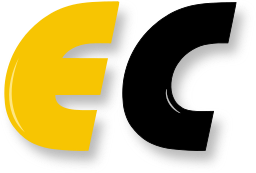CS TTS 26: Cybersecurity in Space: Technologies, Threats, and Solutions |
| Submission link | https://easychair.org/conferences/?conf=cstts26 |
| Submission deadline | June 30, 2025 |
| Overleaf Chapter Template | https://www.overleaf.com/read/zdtrrmzdrsgh#c0d273 |
As governments and private enterprises continue to allocate substantial resources to the development of space technologies, the field is undergoing rapid transformation, bringing both unprecedented opportunities and new risks to global cybersecurity. The integration of advanced space systems into critical infrastructure has rendered cybersecurity in the space domain a pivotal concern.
The proliferation of space technologies, exemplified by the deployment of over 7,000 Starlink satellites, has concomitantly given rise to novel cyber threats. The war in Ukraine has highlighted these vulnerabilities, as evidenced by Russian cyberattacks on the KA-SAT satellite network. These events underscore the pressing need for research and development in the domain of cybersecurity for space systems, ensuring that governments and organizations can anticipate and mitigate potential threats.
This book aims to provide a comprehensive overview of space technologies, their associated cyber threats, and defense mechanisms by bringing together insights from researchers, industry leaders, and government stakeholders. By convening expertise from diverse sectors, this work aspires to empower decision-makers with the knowledge essential to fortifying cybersecurity in space and navigating the dynamic threat landscape. It is our hope that the insights presented in this book will be instrumental in guiding decision-makers regarding the future of cybersecurity strategies in the space domain.
General Guidelines
Dear author,
We appreciate your contribution to this project. The following words are intended to assist you in adhering to our writing and formatting standards, thereby ensuring seamless integration of your input into the final book. We kindly request that you compare your chapter with the following guidelines before submitting it. In the event of any ambiguity regarding specific requirements, we will defer to your professional judgment and address the matter internally among editors.
Requirements
The chapter length should not exceed 6-8 pages long, with an abstract of max. 200 words. The chapter structure should be the following:
- Abstract
- Introduction
- Analysis
- Trends
- Conclusion
Please note that abstracts will not always appear in the print version of the book.
The text must be compatible with ACL 2023 Policy on AI Writing Assistance.
Additionally, we kindly request that you provide a brief biography (less than 100 words) that will allow us to fully credit you in the book.
Writing Guidelines
General:
- Avoid the usage of personal pronouns, e.g. “In this chapter, I/We will be introducing…”
- Acronyms: Acronyms, when fully spelled out, should be put in italic, e.g. “Quantum Computation (QC)”.
- If an acronym is introduced, the fully spelled word shouldn’t be used in the rest of the chapter.
- The chapters are short, please use as few acronyms as possible.
Media:
- You are expected to use only media, whether images or graphics, that you have created yourself.
- Font size for captions should be the same as the font size of the text.
References:
- The chapter should not have more than 10 references
- In the reference section, the number of referenced authors per source should be limited to three. If there are more, cite only the first, followed by “et al.”
- Limit the number of citations to about 20 (max).
You can find more details about the specifics here: Instructions for Authors: Manuscript Guidelines | Springer — International Publisher.
Edition
Editorial Team
- Dr. Vincent Lenders
- Dr. Julian Jang-Jaccard
- Dr. Alain Mermoud
- Dr. Martin Strohmeier
- Valentin Mulder
- Evan Blezinger
- Vladimir Pfister
- Alexandre Vallotton
Contact
All questions about submissions should be emailed to Valentin Mulder at this address: valentin.mulder@armasuisse.ch.
